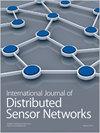语义传感器网络中基于图的传感器推荐模型
IF 2.5
4区 计算机科学
Q3 COMPUTER SCIENCE, INFORMATION SYSTEMS
International Journal of Distributed Sensor Networks
Pub Date : 2022-05-01
DOI:10.1177/15501477211049307
引用次数: 1
摘要
在过去的几年里,引入本体来描述语义传感器网络中不同实体之间的概念和关系,增强了实体之间的互操作性。现有的工作大多基于SPARQL检索,忽略了用户对传感器属性的特定要求。因此,推荐结果不能满足用户的需求。在本文中,我们提出了一个基于图的传感器推荐模型。该模型主要包括两部分:(1)对数据图中的节点进行过滤。除了使用传统的图匹配算法外,我们还提出了一种阈值修剪算法来缩小匹配范围,提高匹配效率。(2) 推荐前k个传感器。我们使用改进的快速非支配排序算法来获得传感器数据集的局部最优解,并使用简单的加性权重算法来刻画和排序局部可选解。最后,我们向用户推荐前k个传感器。相比之下,基于图的传感器推荐算法比其他算法更能满足用户的需求,实验表明,我们的模型在响应时间和精度方面都优于几个基线。本文章由计算机程序翻译,如有差异,请以英文原文为准。
A graph-based sensor recommendation model in semantic sensor network
In the past few years, introducing ontology to describe the concepts and relationships between different entities in semantic sensor network enhances the interoperability between entities. Existing works mostly based on SPARQL retrieval ignore the user’s specific requirements of sensor attributes. Therefore, the recommendation results cannot satisfy the user’s needs. In this article, we propose a graph-based sensor recommendation model. The model mainly includes two parts: (1) Filtering nodes in data graph. In addition to using the traditional graph matching algorithm, we propose a threshold pruning algorithm to narrow the matching scope and improve the matching efficiency. (2) Recommending top-k sensors. We use the improved fast non-dominated sorting algorithm to obtain the local optimal solutions of sensor data set, and we apply the simple additive weight algorithm to characterize and sort local optional solutions. Finally, we recommend the top-k sensors to the user. By comparison, the graph-based sensor recommendation algorithm meets user’s needs more than other algorithms, and experiments show that our model outperforms several baselines in terms of both response time and precision.
求助全文
通过发布文献求助,成功后即可免费获取论文全文。
去求助
来源期刊
CiteScore
6.50
自引率
4.30%
发文量
94
审稿时长
3.6 months
期刊介绍:
International Journal of Distributed Sensor Networks (IJDSN) is a JCR ranked, peer-reviewed, open access journal that focuses on applied research and applications of sensor networks. The goal of this journal is to provide a forum for the publication of important research contributions in developing high performance computing solutions to problems arising from the complexities of these sensor network systems. Articles highlight advances in uses of sensor network systems for solving computational tasks in manufacturing, engineering and environmental systems.

 求助内容:
求助内容: 应助结果提醒方式:
应助结果提醒方式:


